The U.S. Wants to Bring Back the Shah of Iran
SPOTLIGHT, ANGLO AMERICA, MIDDLE EAST AND NORTH AFRICA, 24 Jun 2019
David William Pear | The Greanville Post – TRANSCEND Media Service
Historical Facts, Events
The US had a great deal going from 1953 to 1979 with the Shah of Iran. For 25 years Iran was a cornerstone of the US usurping the British Empire in the Middle East, following World War Two. Iran was a base for projecting US power in the region, and strategically it bordered the Soviet Union during the Cold War.
During the early 20th century the British Empire had full control of Iran’s oil industry, and was paying Iran a flat fee for every barrel of oil it extracted. A rough calculation of Iran’s royalties is between 8% to 16% of the profits, but Iran was never allowed to look at the financial books. [*]
Prior to the CIA-led 1953 overthrow of the democratically elected Prime Minister Mohammed Mossadegh, Iran demanded 50% of the profits and control of their oil industry. That was not unreasonable, but Iran was willing to negotiate. At the time, the US oil companies had a 50/50 profit sharing agreement with Saudi Arabia.
The British refused any negotiated settlement. It was then that the Iranian parliament led by Mossadegh voted to nationalized Iran’s oil industry. The British responded with a naval blockade, and began plotting to overthrow Mossadegh and the parliament. As the Prime Minister, Mossadegh held the most political power in Iran because the people were behind him. The Shah of Iran was mostly a figurehead, at the time. [*]
President Harry Truman was adamantly against colonialism and sided with Iran, which infuriated the British. When President Dwight D. Eisenhower took office in 1953, he sided with the British. Eisenhower and Churchill plotted a coup d’état to overthrow Mossadegh. The frightened Shah, who was in on the plot, fled from Iran before the coup attempt just in case anything went wrong. The first attempt did fail. A second daring CIA-led coup succeeded and the US reinstalled Mohammad Reza Pahlavi as the Shah of Iran, with dictatorial power.
By its intervention, the US broke the British Empire’s monopoly on Iran’s oil. That was part of the US’s calculus. After the coup, US oil companies got 40% of Iran’s oil industry, 14% went to Royal Dutch-Shell, 6 % went to the French Petroleum Company, and the British oil company (forerunner of BP] kept 40%. In addition, Iran got its 50/50 share of the net profits that it wanted in the first place. The US immediately sent financial aid to prop up the Shah, and to bolster Iran’s weakened economy from the British blockade.
If the British had initially been flexible, renegotiated a 50/50 oil deal with Prime Minister Mossadegh, then it would have made a coup less likely. Iran was developing a secular democratic government. It might have become a model for other post-colonial countries in the Middle East. Democracy and self-determination are what the US said its world mission was going back to President Woodrow Wilson in 1918:
“….every peace-loving nation which, like our own, wishes to live its own life, determine its own institutions, be assured of justice and fair dealing by the other peoples of the world as against force and selfish aggression. All the peoples of the world are in effect partners in this interest, and for our own part we see very clearly that unless justice be done to others it will not be done to us.” [*]
Since Iran was a developing democracy, an excuse had to be found for a US intervention. Churchill accused Mossadegh of being a communist. There was no evidence that he was. Mossadegh was an anti-colonial nationalist who cared about the welfare of the Iranian people, and that was all the evidence that Eisenhower needed. Mossadegh had to be punished for standing up to the British and demanding Iran’s natural resources for the benefit of the Iranian people.
The winners from the coup were the US and the timid Shah who had ran from his own people. The US would teach him how to have a backbone. He turned out to be a good student, and with the support of the US he turned Iran into a totalitarian police state and ruled by terror. The Shah got US protection from his own people and from foreign enemies.
The US looked the other way from the Shah’s corruption of conspicuous consumption, stuffing dollars in foreign bank accounts and lining his own pockets, and those of his cronies. The US got a big piece of the Iran oil industry, and Iran gave the US a strategically important location for a military presence. As for the people of Iran, they continued to live in abject poverty and illiteracy. [*]
Now that the Shah is gone, the US propaganda machine and the mainstream media put out a flood of stories about how wonderful life was under the Shah. The propagandists use economic indicators of inflation, employment, gross domestic product, oil exports and the upper-class standard of living. Anybody who puts out those kinds of comparative economics deserves to flunk Economics 101.
Iran has been under severe US-imposed economic sanctions for 40 years. The US has been threatening Iran with war and “all options are on the table” for decades. The US has also instigated instability inside Iran and supported external attacks by terrorist groups such as Mujahideen-e-Khalq, or MEK. [*]
MEK was on the US State Department’s list of terrorist organization until it was removed by former Secretary of State Hillary Rodham Clinton in 2012. [*] The fact that MEK has killed US citizens in terrorist attacks did not hinder some US politicians from accepting large speaking fees at their conventions, even when MEK was still on the US terrorist list. [*]
The US project to destroy Iran’s economy has had a devastating impact. The husky Secretary of Defense Mike Pompeo said that it is up to Iranians’ leadership “if they want their people to eat”.[*] Because of the US, Iran lacks sufficient funds that it would like to invest in human resources and social programs. Iran’s constitution guarantees healthcare and free education for all, as well as protections of civil rights. As reflected in the drafting of the Constitution of the Islamic Republic, the vision of the economic order was:
“Social justice and economic independence were the main economic goals to be achieved, among other means, through the expansion of the welfare state, extension of public ownership, creation of an active cooperative sector, and strengthening the agricultural and industrial sectors for greater self-reliance. ….the Constitution of the Islamic Republic bears great resemblance on economic issues to the charters and constitutions of Arab “socialist” states drafted during the 1960s and 1970s.” [*]
Constant US, Israeli and Saudi threats require Iran to divert its domestic budget more towards defense, instead of its desired economic goals. Terrorist attacks and internal dissent stirred up by the US causes Iran to increase its internal security to the detriment of civil liberties. The US and the mainstream media propaganda machines know what the deliberate effects of US aggressive actions cause, but they cruelly taunt Iran for its economic and social hardships by blaming the victim.
The US uses these same dirty tricks against Cuba, Venezuela, Nicaragua, North Korea, Russia and every other country that the US demonizes for not falling into line behind US domination in the neoliberal New World Order. The New World Order is the US foreign policy that it alone is unrestrained to “destabilize countries in order to integrate them militarily, politically and economically ….into US-style capitalism and culture”. [*]
The US is still fighting a cold war against socialism, the welfare state, and public ownership. A cold war against Iran is not about US national security. Iran is not an existential threat to the US, or to Israel either. [*] It is about US corporations being thwarted from exploiting Iran’s natural resources, privatizing their state-owned enterprises, and “opening” Iran to unequal trade arrangements. It is also about the US being the hegemon in the Middle East.
The US is still using the same gunboat diplomacy that it has been using since the 19th century to “open” Latin America, Japan, Korea, China and the Philippines to exploitation. It is old fashioned imperialism dressed up in the jargon of “human rights, democracy, and US exceptionalism”. It is what old-world colonialism called “civilizing the heathens”.
The US will never forgive the Islamic Republic of Iran for shutting down the US deal of exploitation. With the Shah’s cut from oil companies, he was a very big customer for US weapons manufacturers, such as General Dynamics, Lockheed, and Northrop. He also aggressively bought into President Dwight D. Eisenhower’s Atoms for Peace program. At the urging of the US, Iran began its nuclear program in 1957. [**]
Selling weapons and nuclear technology was good business for weapons manufacturers and the nuclear industry. US companies like General Electric and Westinghouse sold Iran the nuclear equipment and technology, as well as the enriched uranium fuel. They even sold the Shah highly enriched weapons grade uranium, which is the most efficient for producing electricity, and making atomic bombs, too. [*]
As far as the US public knew the Shah was highly popular and loved by his people. Imagine the surprise when the people of Iran overthrew him in 1979. The mainstream media was shocked too, since they had swallowed their own propaganda. The images of Iranians rioting, protesting, burning the US flag and shouting Death to America were frightening, it looked irrational, and it seemed to come out of nowhere.
The US public and press became outraged when the US Embassy in Tehran was stormed by revolutionary students who took 52 Americans hostage. The students renamed the US Embassy the “Den of Spies”. The students had every reason for that name, given the cache of incriminating documents they discovered. [*]
In the US, every nightly TV news broadcast began with the number of days that had passed since the beginning of the Iran Hostage Crisis. [“America held hostage”] It lasted for 444 days, and resulted in President Carter losing his re-election bid to Ronald Reagan in 1980.
Instead of an imperial looking shah, the Iranian Revolution ushered in an Islamic leader to head the government. The thought of Iran turning into a theocracy seemed antiquated to Americans. They had not known that Ayatollah Khomeini was a national hero since the early 1960’s. He had been arrested, tortured, imprisoned and then exiled to France for his outspoken opposition to the Shah. [*] The unphotogenic image of a dour looking Ayatollah Khomeini was an easy target for Western racist and Islamophobic propaganda.
The US public could not understand why Iran became anti-US, anti-West, anti-modern, and appeared to be fanatical. The violent purging of the Shah’s cronies and of the opposition was shocking. Iranian supporters of the Shah who fled to the US brought with them wild tales of people being hung from street lamps for having televisions and toilets in their homes. They left out the part about how they lived in affluent luxury, while the vast majority of people lived in hovels. The transition was violence, and it lasted for about 2 years.
The US public had no idea why the Iranian people hated the US so much. The facts were kept secret from the public for years. The State Department documents were finally made public in 2017. [*] For many decades the public did not know that it was the US, from President Eisenhower on down through the State Department and the CIA, which overthrew the popular democratically elected government of the charismatic Prime Minister Mohammad Mossadegh. [*] But the Iranian people knew that It was the US that put the brutal regime of Mohammad Reza Pahlavi on the Peacock Throne. [*]
The US public was uninformed of the Shah’s repression, political prisoners, torture chambers, assassinations, disappearances and executions. Not only did the US government turn a blind eye to the brutality, it was the CIA (and Israel’s Mossad) that was the overseer and mentor to the Shah’s secret police; the “Organization of National Intelligence and Security of the Nation”, known as SAVAK. [*]
httpv://m.youtube.com/watch?v=JA1Odt1rHOU
[YouTube, 1953 Iran US-Led CIA Coup d’etat]
For an example of the Shah’s brutality, an Amnesty International assessment for 1974-1975 report stated:
“The shah of Iran retains his benevolent [world] image despite the highest rate of death penalties in the world, no valid system of civilian courts and a history of torture which is beyond belief.” [*]
Once when The Shah was confronted by a journalist for the French newspaper Le Monde about his brutal repression methods he responded:
“Why should we not employ the same methods as you Europeans. We have learned sophisticated methods of torture from you. You use psychological methods to extract the truth; we do the same.”
In 1978 Amnesty International reported that nothing had changed for the better in Iran. Even the mention of the word SAVAK was enough to send chills down the backs of Iranians.
The explosion of the Iranian Revolution of 1979, the Hostage Crisis and the animosity of the Iranian people towards the US government was the direct result and blowback from 25 years of the US coddling and sheltering its shah puppet. As Kermit Roosevelt who was the CIA station chief in Tehran in 1953 said of the Shah: “He’s our boy”. It was Roosevelt who engineered and implemented the coup that brought the Shah to power. The codename for the coup was Operation Ajax. [*]
Just as Trump is trying to cover up for MBS (as Thomas Friedman affectionately refers to the Crown Prince of Saudi Arabia), President Jimmy “Human Rights” Carter tried to cover up and sheltered Mohammad Reza Pahlavi after the Iranian Revolution. The Iranian people wanted the Shah arrested by the US, where he had fled. They wanted him extradited to Iran to face justice.
Henry Kissinger and David Rockefeller had appealed to Carter’s compassion to admit the Shah to the US for health reasons. After much vacillation Carter agreed. [*] Carter had had a friendly personal relationship with The Shah. In 1977 Carter visited Iran and toasted the Shah for his “island of stability” and for “the admiration and love which your people give you”. [*]
Carter admitted the Shah to the US on October 21, 1979. On November 4, 1979 revolutionary students took over the US Embassy in Tehran, and demanded the Shah in exchange for the US hostages. Carter said he refused to give in to “blackmail” to a group of “terrorists”. Still vacillating, Carter expelled the Shah from the US. He died in Egypt in 1980. [*]
As a reaction to the Iran Hostage Crisis, the US imposed unilateral sanctions on Iran, cut off the sale of oil and froze their assets in the US. The US put an embargo on Iran, including humanitarian supplies, and the US broke diplomatic relations. Needless to say, the US stopped its “Atoms for Peace” program and cooperation with Iran in developing nuclear energy. [*]
Not coincidentally, Iran released the US hostages within hours of Ronald Reagan being sworn in as President in 1981. The circumstances and timing of the hostage release is still controversial. [*] Most likely, Carter deserves the credit for successfully negotiating the release of the hostages. [*] Why the Iranians released the hostages when they did is still a mystery.
In 1980 Iraq invaded Iran starting the Iran-Iraq war that lasted until 1988. Whether or not the US gave a “green light” to Saddam Hussein to invade Iran, the US did not try to prevent or stop Iraq’s aggression. According to Dexter Filkins, writing in the New Yorker:
Iran’s leaders took two lessons from the Iran-Iraq War. The first was that Iran was surrounded by enemies, near and far. To the regime, the invasion was not so much an Iraqi plot as a Western one. American officials were aware of Saddam’s preparations to invade Iran in 1980, and they later provided him with targeting information used in chemical-weapons attacks; the weapons themselves were built with the help of Western European firms.
The other lesson drawn from the Iran-Iraq War was the futility of fighting a head-to-head confrontation. ……Instead, they had to build the capacity to wage asymmetrical warfare—attacking stronger powers indirectly, outside of Iran. [*]
According to the New York Times, “the Reagan Administration secretly decided shortly after taking office in January 1981 to allow Israel to ship several billion dollars’ worth of American arms and spare parts to Iran”. [*] Cynically the US later said that it gave aid to both sides “to remain neutral”; and unsaid was to keep either side from winning. Both Iran and Iraq suffered over 500,000 casualties each in the Iran-Iraq War.
If the US had hoped that the Iran-Iraq war would weaken Iran, then the unintended consequences were just the opposite, as often is the case with US duplicity. Iraq’s invasion of Iran united the Iranian people strongly behind the Iran revolutionary government. In 2003, President Bush’s invasion of Iraq would make Iran an even stronger regional power.
In 1982 Israel invaded Lebanon, and through a series of events Reagan sent US Marines to Lebanon. He called them a “peacekeeping force” to avoid having to get Congressional approval under the 1973 War Powers Resolution. In 1983 a truck bomb suicide attack on a Marine barracks in Lebanon killed 241 people, mostly US Marines. The US blamed the attack on Iran and declared Iran a “terrorist state”. More US sanctions were imposed on Iran even though there was only circumstantial evidence that Iran was the perpetrator.
In 1988 the US shot down an Iranian commercial airliner that was in Iranian airspace. All 290 passengers and crew of the airliner died. [*] The US claimed that it mistook the plane for a threatening fighter jet. Even though the US admitted that it had shot down the airliner, President George H. W. Bush refused to apologize, saying “I’m not an apologize-for-America kind of guy”. [*]
Even with all the turmoil of the 1980’s, Iran continued to work on its nuclear program. It had signed the Nuclear Non-Proliferation Treaty (NPT) in 1970. Iran has every right under the treaty to a nuclear energy program. In fact, under the treaty the nuclear-weapons countries are obligated to cooperate with the non-nuclear-weapons countries in the peaceful development of atomic energy.
Instead of abiding by the NPT, the US used the red herring that Iran had a nuclear weapons program. Without proof, the US slapped unilateral economic sanctions on Iran. So, Iran turned to France, Russia and other countries to purchase material, equipment and technology for its nuclear energy program.
After the Iraq invasion of Kuwait in 1990, and the US war with Iraq, the US imposed sanctions on both Iraq and Iran. While Iran had declared neutrality in the war, the US accused Iran of secretly aiding Iraq. The real reason why the US imposed sanctions on Iran was that it was concerned that a weakened Iraq would strengthen Iran as a regional power, which is exactly what it did. [*]
Then in 1996 under President Bill Clinton, what was to become known as the Iran and Libya Sanctions Act was passed by Congress. l*] This act penalized any US or foreign entities that invested in Iran’s oil and gas industry. The supposed rational was that investing in Iran’s oil and gas industry would provide Iran with the funds to develop weapons of mass destruction. Since money is fungible, the same logic could be used about all trade with Iran, and eventually it was. Still there is no proof, except circumstantial, that Iran has ever had a nuclear weapons program.
The real reason for economic sanctions is that the US is engaging in economic warfare against Iran. It is angry because their puppet shah was overthrown. US economic sanctions are an attempt to destroy Iran’s economy. As the most powerful and influential economic nation in the world the US can exert tremendous financial penalties, hardships and isolation on other countries. Most of the suffering from sanctions are borne by civilians.
Does supporting the aggressor in a war, aiding the aggressor in the use of banned chemical weapons, giving both sides weapons to kill each other, and shooting down a civilian airliner qualify as “state sponsored terrorism”? Since 1979 the US has killed millions of people is covert operations such as in Afghanistan, and in illegal wars of aggression in the Middle East, such as the 2003 invasion of Iraq.
Yet, Iran is condemned by the US as the world’s “leading state sponsor of terrorism”? Such accusations by the US against Iran are hypocritical and politically motivated hyperbole. [*] The motive for US propaganda is to aid the cause of overthrowing, one way or another, the internationally recognized legal government of Iran. [*] The world’s leading sponsor of state terrorism is surely the US, and its partners in terrorism are the UK, Israel, and Saudi Arabia, and the other Gulf Cooperation Council countries.
The definition of terrorism according to Webster’s dictionary is “the unlawful use of violence and intimidation, especially against civilians, in the pursuit of political aims”.
The victims of US economic sanctions call it financial terrorism. It is and it does hurt mostly civilians financially, and it causes them unnecessary suffering and deaths from the lack of nutrition and medicines for curable and preventable diseases. There is also tremendous emotional distress on the civilian population caused by economic sanctions. Alcoholism, drug addiction, divorce, crime and many other social conditions are exacerbated.
Economic sanctions meet the definition of terrorism, and that makes economic sanctions a crime against humanity. Even UN authorized economic sanctions overstep the Geneva Conventions and are immoral and may be unlawful. The International Committee of the Red Cross has cautioned the United Nations Security Council that the “Security Council is bound to observe the principles of international humanitarian law when designing, monitoring and reviewing sanctions regimes.” [*]
The US wants to turn the clock back to 1953 and a return of the Shah of Iran. Why not? The US had a great deal going with the Shah of Iran for a quarter of a century, until the Iranian Revolution of 1979. That is why the US hates the current government and wants to overthrow it.
The US is determined to undermine the government of Iran. President Trump’s violation of the JCPOA, “Iran Deal”, has put “all options on the table” again: economic sanctions, terrorism, war and even the use of nuclear weapons. Iran is now in its 40th year of the Islamic Republic. [*] Speaking to the terrorist group MEK in 2017, John Bolton said that President Trump’s policies should be that “Ayatollah Khomeini’s 1979 revolution will not last until its 40th birthday.” [*] The 40th anniversary of Iran’s Islamic Revolution will take place in a few months, on February 11, 2019. Obviously, Bolton is not invited.
httpv://m.youtube.com/watch?v=hTMh24qlyQA
John Bolton: Iran Regime Must Not Reach 40th Birthday
Trump says that the Iran Deal is the worst deal in history. What the US wants is the old deal that it had with Iran from 1953 to 1979. That was the “Greatest Iran Deal in History”. The CIA already has their man ready. They have been grooming him since he was 17 years old. He lives not far from the CIA headquarters in Langley, Virginia. He is Reza Pahlavi, the Crown Prince of Iran. He is the last heir apparent to his father’s defunct Peacock Throne. He is waiting in the wings for the job opening for a new Shah of Iran.
References:
[*] Glide your mouse over the stars in the article for hyperlinks to supporting attributions.
“The Plot to Attack Iran: How the CIA and the Deep State Have Conspired to Vilify Iran”, by Dan Kovalik.
“Shah of Shahs”, by Ryszard Kapuscinski.
“All the Shah’s Men: An American Coup and the Roots of Middle East Terror”, by Stephen Kinzer.
___________________________________________________
 David William Pear is a columnist writing on U.S. foreign policy, economic and political issues, human rights and social issues. He is a senior contributing editor of The Greanville Post and a prior senior editor for OpEdNews. David has been writing for The Real News Network and other publications for over 10 years. He is a member of Veterans for Peace, Saint Pete (Florida) for Peace, CodePink, and the Palestinian-led nonviolent organization International Solidarity Movement.
David William Pear is a columnist writing on U.S. foreign policy, economic and political issues, human rights and social issues. He is a senior contributing editor of The Greanville Post and a prior senior editor for OpEdNews. David has been writing for The Real News Network and other publications for over 10 years. He is a member of Veterans for Peace, Saint Pete (Florida) for Peace, CodePink, and the Palestinian-led nonviolent organization International Solidarity Movement.
This article is licensed under a Creative Commons Attribution, Non-Commercial 4.0 International License.
Go to Original – greanvillepost.com
Tags: Conflict, Coup, Energy, Geopolitics, History, International Relations, Iran, Journalism, Media, Middle East, Military, NATO, Nuclear Power, Nuclear Weapons, Politics, Power, Religion, Social justice, UK, UN, USA, Violence, War, West, West Asia, World
DISCLAIMER: The statements, views and opinions expressed in pieces republished here are solely those of the authors and do not necessarily represent those of TMS. In accordance with title 17 U.S.C. section 107, this material is distributed without profit to those who have expressed a prior interest in receiving the included information for research and educational purposes. TMS has no affiliation whatsoever with the originator of this article nor is TMS endorsed or sponsored by the originator. “GO TO ORIGINAL” links are provided as a convenience to our readers and allow for verification of authenticity. However, as originating pages are often updated by their originating host sites, the versions posted may not match the versions our readers view when clicking the “GO TO ORIGINAL” links. This site contains copyrighted material the use of which has not always been specifically authorized by the copyright owner. We are making such material available in our efforts to advance understanding of environmental, political, human rights, economic, democracy, scientific, and social justice issues, etc. We believe this constitutes a ‘fair use’ of any such copyrighted material as provided for in section 107 of the US Copyright Law. In accordance with Title 17 U.S.C. Section 107, the material on this site is distributed without profit to those who have expressed a prior interest in receiving the included information for research and educational purposes. For more information go to: http://www.law.cornell.edu/uscode/17/107.shtml. If you wish to use copyrighted material from this site for purposes of your own that go beyond ‘fair use’, you must obtain permission from the copyright owner.
One Response to “The U.S. Wants to Bring Back the Shah of Iran”
Read more
Click here to go to the current weekly digest or pick another article:
SPOTLIGHT:
- Israel Apologists Hasten to Use Bondi Shooting to Attack Anti-Genocide Activists
- Reflecting on the Day the Pacific War Japan/USA Began: Beyond the Elimination of Anti-Military Speeches
- Does Gandhi Still Matter? Yes, and Rajmohan Gandhi Explains Why
ANGLO AMERICA:
- ‘We Want It Back’: Trump Asserts U.S. Claims to Venezuelan Oil and Land
- Judge, Jury, and Executioner: On U.S. Assassination Policy 1975-2025
- Everything the Trump Administration Is Doing in Venezuela Involves Oil and Regime Change—Even if the White House Won’t Admit It
MIDDLE EAST AND NORTH AFRICA:
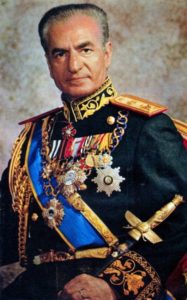
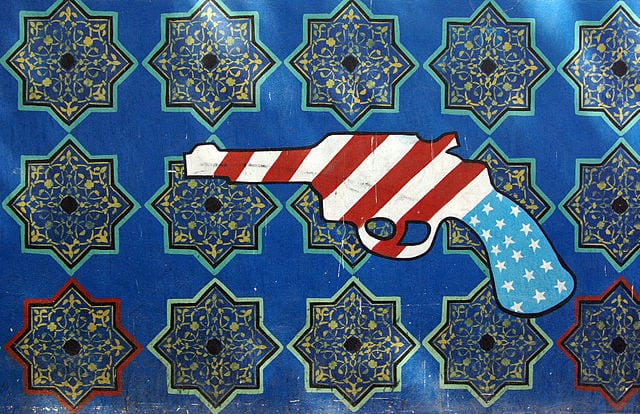
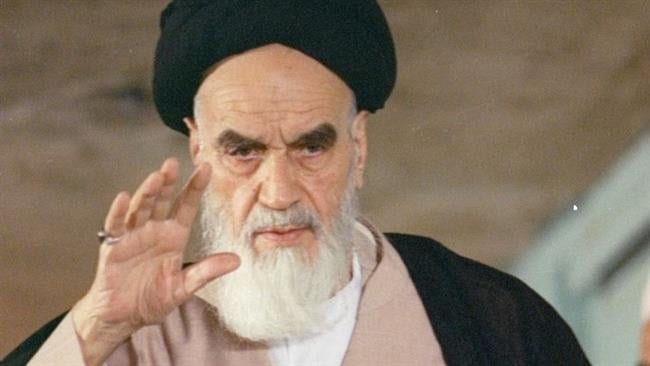
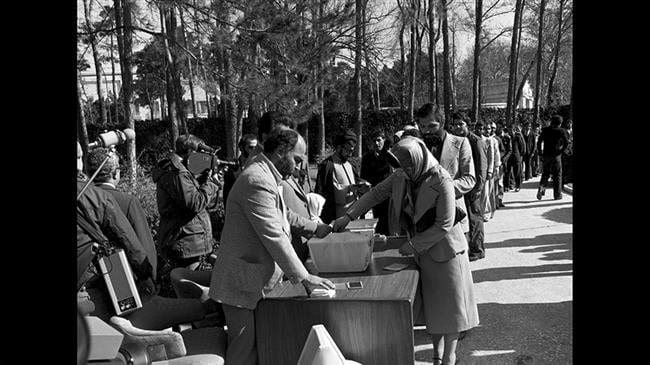
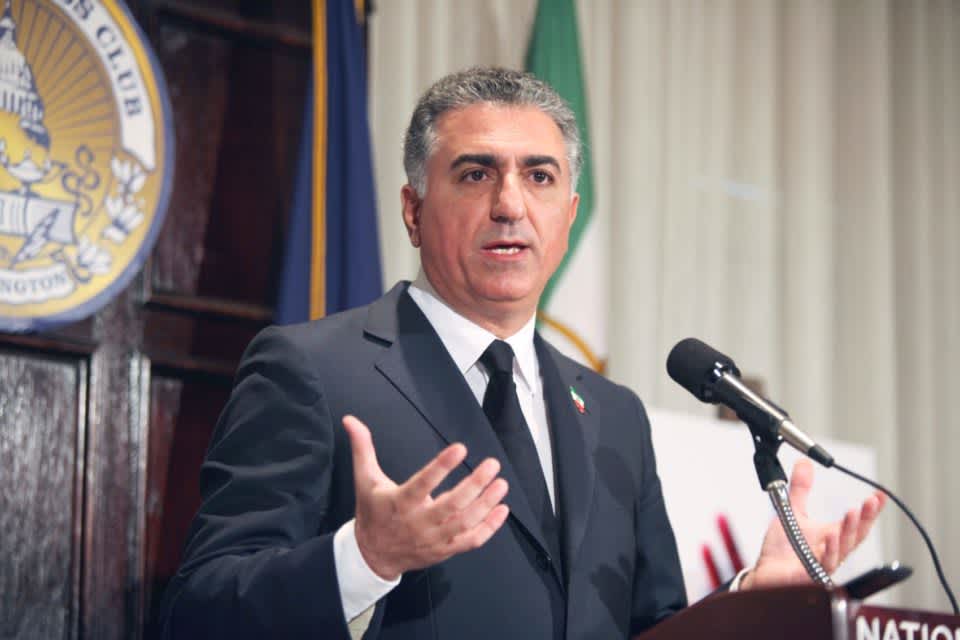
FOR THE TMS READERS’ REFERENCE:
– Reza Pahlavi on 40 Years of the Islamic Republic: (1:16:41): https://m.youtube.com/watch?v=Pw_zQRysd80
– CROWN PRINCE REZA PAHLAVI: “H.I.H. Crown Prince Reza Pahlavi was born in Tehran, Iran on October 31, 1960 to the late Shah of Iran and Empress Farah Pahlavi. As Crown Prince of Iran and the oldest of four siblings, he left Iran at the age of 17 for air force training, during which time the establishment of the clerical regime in Iran prevented his return to his homeland. Despite being forced to live in exile, Reza Pahlavi’s commitment and patriotic duty to Iran endures….An accomplished fighter pilot, Reza Pahlavi completed the United States Air Force Training Program at the Reese Air Force Base in Lubbock, Texas.”: https://www.farahpahlavi.org/about/royal-family/reza
– Reza Pahlavi, Crown Prince of Iran: “Reza Pahlavi (Persian: رضا پهلوی; born 31 October 1960) is the last heir apparent [3] to the defunct throne of the Imperial State of Iran and is the current head of the exiled House of Pahlavi. He is the older son of Mohammad Reza Pahlavi and his wife Farah Diba.”: (Wikipedia): https://en.m.wikipedia.org/wiki/Reza_Pahlavi,_Crown_Prince_of_Iran
– “Iran’s Long-exiled Prince Wants a Revolution in Age of Trump”: (April 10, 2017): https://www.voanews.com/world-news/middle-east-dont-use/irans-long-exiled-prince-wants-revolution-age-trump
– “INTERNATIONAL ROYALS: 23RD APRIL 2018: Crown Prince Reza Pahlavi issues new statement to Iranian royalists following demonstrations”: http://royalcentral.co.uk/international/crown-prince-reza-pahlavi-issues-new-statement-to-iranian-royalists-following-demonstrations-101028
– “Iran’s Long-Exiled Prince Wants a Revolution”: (2:35): https://m.youtube.com/watch?v=RmNAm3e7FXU
– “Exclusive Interview i24news of Crown Prince of Iran, Reza Pahlavi”: (15:50): https://www.dailymotion.com/video/x2oamtf
===================================